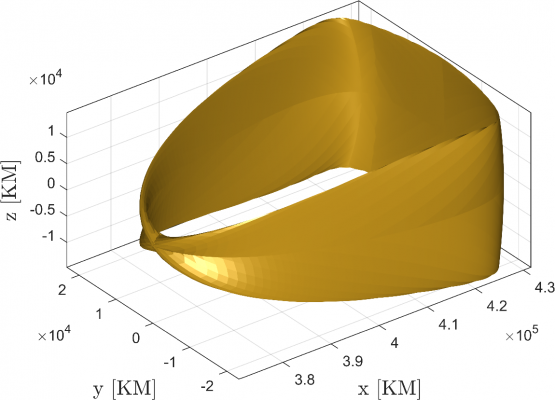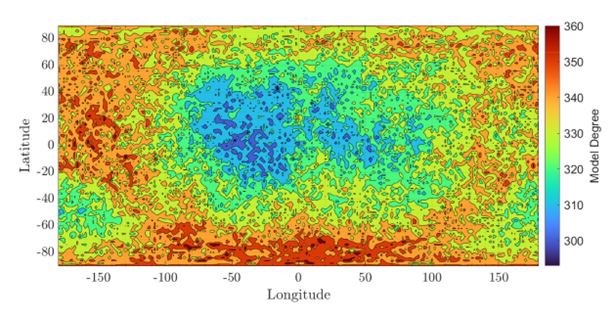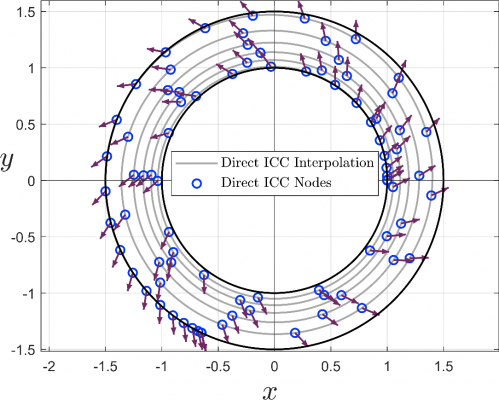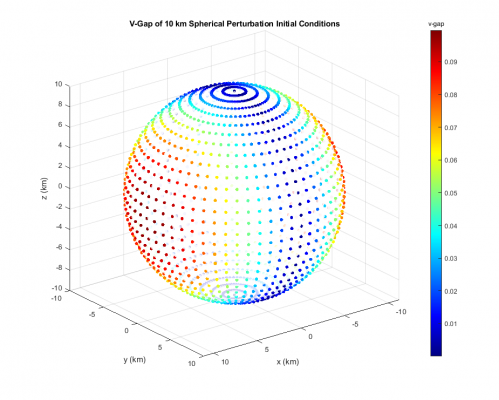Quasi-periodic Invariant Tori
The cislunar (and beyond) mission design space has grown vastly with the recent incorporation of quasi-periodic invariant tori. Advancements in the computation, characterization, and control of trajectories on surfaces of these structures in the last two decades are beginning to make their way into preliminary design of spacecraft missions. Research at LASR focuses on new methods of computation and approximation characterization, as well as the relative motion, adaptive control, and collision avoidance on these structures’ surfaces.

Earth-Moon Constant Frequency Ratio Low Prograde Quasi-periodic Torus
Space Domain Awareness
Space domain awareness (SDA) is a current hot topic in the astronautical engineering community. Dealing with the study and monitoring of objects orbiting around the Earth, there is a new push to extend SDA methodologies to accommodate the cislunar domain. Analysis of legacy and development of new SDA methods is of great interest for many upcoming space missions. Work at the LASR Laboratory has investigated current, and developed new, cislunar SDA models and algorithms lying within three categories: rapid, optimal orbit transfer fitting, the spherical harmonic gravity (SHG) field representation, and orbit determination through batch/sequential processes. Optimal bi-impulse orbit transfers have been utilized to realize bang-bang fuel-optimal transfer solutions, and match them to observations. A method to select a truncated model degree of an SHG field representation with respect to the total model uncertainty for a given orbit and spatial location has been proposed. The sensitivity of the traditional Lunar orbit determination (OD) algorithm utilizing Earth-based ground observations with reference to observational considerations has been investigated. Gooding’s angles-only OD method has been modified to perform Lunar satellite-to-satellite OD and was improved by accounting for observer uncertainty. A new modification to the Kalman filter has been derived to restrict the state estimate and covariance updates to enhance filter consistency.

Optimal Model Degree by Lunar Subsatellite Point
Spacecraft Trajectory Optimization
Spacecraft trajectory optimization will continue to be a critical area of academic research as long as humanity has its presence in space. At LASR, researchers are leveraging new developments of Integral Chebyshev Collocation to solve highly sensitive optimal trajectory problems with low integration times through both indirect and direct transcription. Specific research areas include the rapid re-computation of relative motion trajectories in the close rendezvous phase of RPOD missions, constrained solar-sailing maneuvers, and more!

Minimum-Time, Attitude Rate Constrained Solar Sailing Rendezvous Optimization using Direct ICC
Dynamical Model Fidelity Measures
Planning and tracking the motion of resident space objects in the cislunar environment is difficult. Analysts must grapple with a complex gravitational field made up of multi-body perturbations and a variable lunar mass distribution; the unstable equilibrium points and chaotic motion present in the cislunar regime can create very large changes in an object’s trajectory out of very small changes in initial conditions. Further, in the realm of cislunar Space Situational Awareness (SSA), the sensor framework and orbit determination capabilities currently in place limit our ability to maintain continuous custody of their assets from launch to cislunar space. The combination of these complications emphasizes the need for accurate dynamic models in order to accurately predict and track the motion of cislunar objects when custody is broken. However, using the highest fidelity force model available is not always cheap or efficient. Nevertheless, utilizing an oversimplified dynamics model will result in missing forces in the motion approximation, making it difficult to accurately track the true behavior of a target object. To address this complication, researchers at LASR are studying model fidelity quantification metrics and tools that measure the responsive gap between models of varying fidelity to determine an optimal approximation of reality. Novel gap metrics that can be applied to nonlinear, time-varying, and uncertain dynamical systems will provide insight into conditions where lower fidelity models make appropriate approximations of reality and where higher-fidelity models are necessary. Gap curves about regions of interest can be mapped and will allow analysists to choose between different models and blend them as needed.

Application of the V-Gap Metric to Perturbed Trajectories About Earth-Moon Lagrange Point 1
